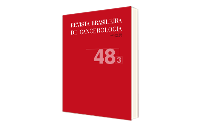Fungating wounds: a review of the literature
DOI:
https://doi.org/10.32635/2176-9745.RBC.2002v48n3.2217Keywords:
Wound Healing, Skin, Injuries, Neoplasms, Nursing Care, Quality Of LifeAbstract
This paper analysed twelve articles about fungating wounds. It examined the definitions, characteristics and the care. The objective was to identify the aspects of these wounds in the literature. Fungating wounds are the infiltration of malignant cells through the epitelial tissue,changing epidermal integrity. These wounds have their own characteristics such as hemorrhage, smell, infection and exudate. The topic treatment consists on gel metronidazole, calcium alginate, actived charcoal and hydrogel. However, generally, this topic treatment doesn't lead to the healing of the wound. It just controls the symptoms, since the cicatrization depends on the primary cancer. The aim of the treatment is to control the symptoms in order to improve the patient's quality of life.









